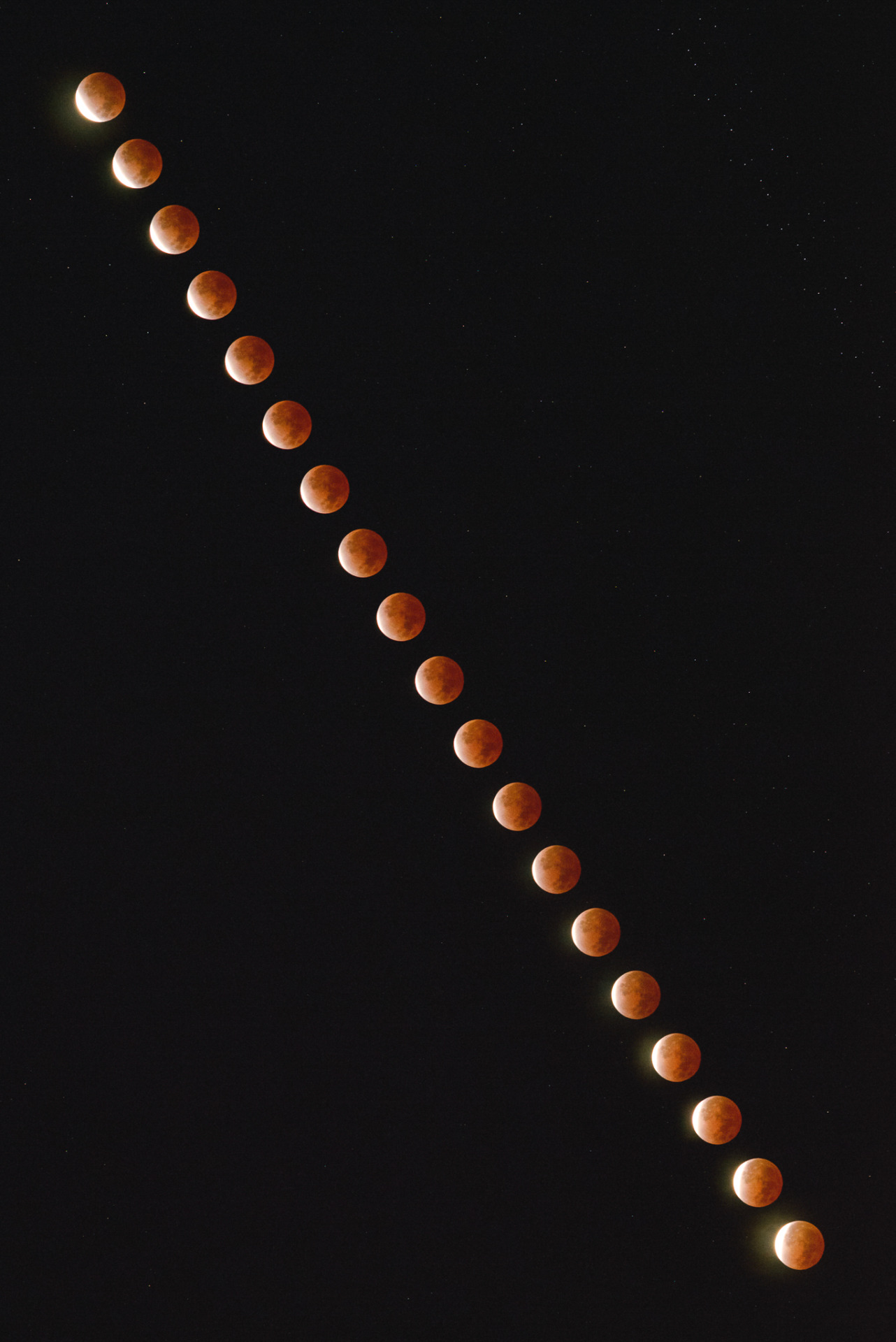How to see the total lunar eclipse on Sunday night, May 15, 2022
May 5, 2022 (updated May 15, 2022)
By Amy Sayle
For the first time in North Carolina in more than three years, we get to view a special kind of celestial treat: a total lunar eclipse, when the Sun, Earth, and Moon line up such that the full moon travels through Earth’s shadow in space.
The eclipse action will unfold over a few hours, starting Sunday evening, May 15, 2022, and continuing into the early morning hours of Monday, May 16. See an animation here.
Here’s what you need to know to enjoy the lunar eclipse:
1) The eclipse times are reasonable for those of us in the Eastern United States, unlike that near-total lunar eclipse we had last November, when the action didn’t start until after two in the morning.
Here’s when to watch:
- Partial eclipse begins at 10:28 p.m. EDT on Sunday, May 15, 2022
- Total eclipse begins at 11:29 p.m.
- Maximum eclipse is at 12:11 a.m. on Monday, May 16, 2022
- Total eclipse ends at 12:54 a.m.
- Partial eclipse ends at 1:55 a.m.
These times are Eastern Daylight Time. If you live elsewhere, convert these times to your own time zone. You must be on Earth’s nighttime side (with clear skies) during these hours to see the eclipse; otherwise, the Moon is below your horizon.
A penumbral eclipse – when the Moon passes through Earth’s fainter outer shadow– precedes and follows the main eclipse action listed above, but the penumbral phases are less easily observable.
2) The eclipse is very easy to view. Just walk outside and look up. For North Carolinians, the Moon will be roughly one-third of the way up in the sky above the southeastern or southern horizon, depending on what time you look.
All you need are your eyes and reasonably clear skies. You don’t need dark skies. You don’t need to travel anywhere. You don’t need special viewing equipment.
A lunar eclipse is perfectly safe and enjoyable to look at with just your unaided eyes, although it will appear even more striking through binoculars or a telescope.
3) It will look really cool. As the Moon passes into Earth’s shadow, watch the Moon appear to turn an interesting shade of red. In the partial phases, you’ll see that Earth’s shadow is curved (evidence that our planet is round!), as if something is taking a bite out of the Moon. At totality, it kind of looks like a dark red hole has opened up in the sky.
4) It can especially meaningful and memorable to witness an eclipse with others. If you’d like to join a nice crowd in watching the heavens align, come to Dorothea Dix Park in Raleigh for a skywatching event (weather permitting) on Sunday, May 15, 2022, between 9:30 p.m. and 12 midnight. Please register here. This event is free.
Please note that Dix viewing event is canceled due to cloud cover in the forecast and a chance of thunderstorms.
Telescopes will be provided at this event by Morehead Planetarium and Science Center, Raleigh Astronomy Club, and the Chapel Hill Astronomical and Observational Society; music will be provided by the Triangle Sax Ensemble. Hope to see you!

